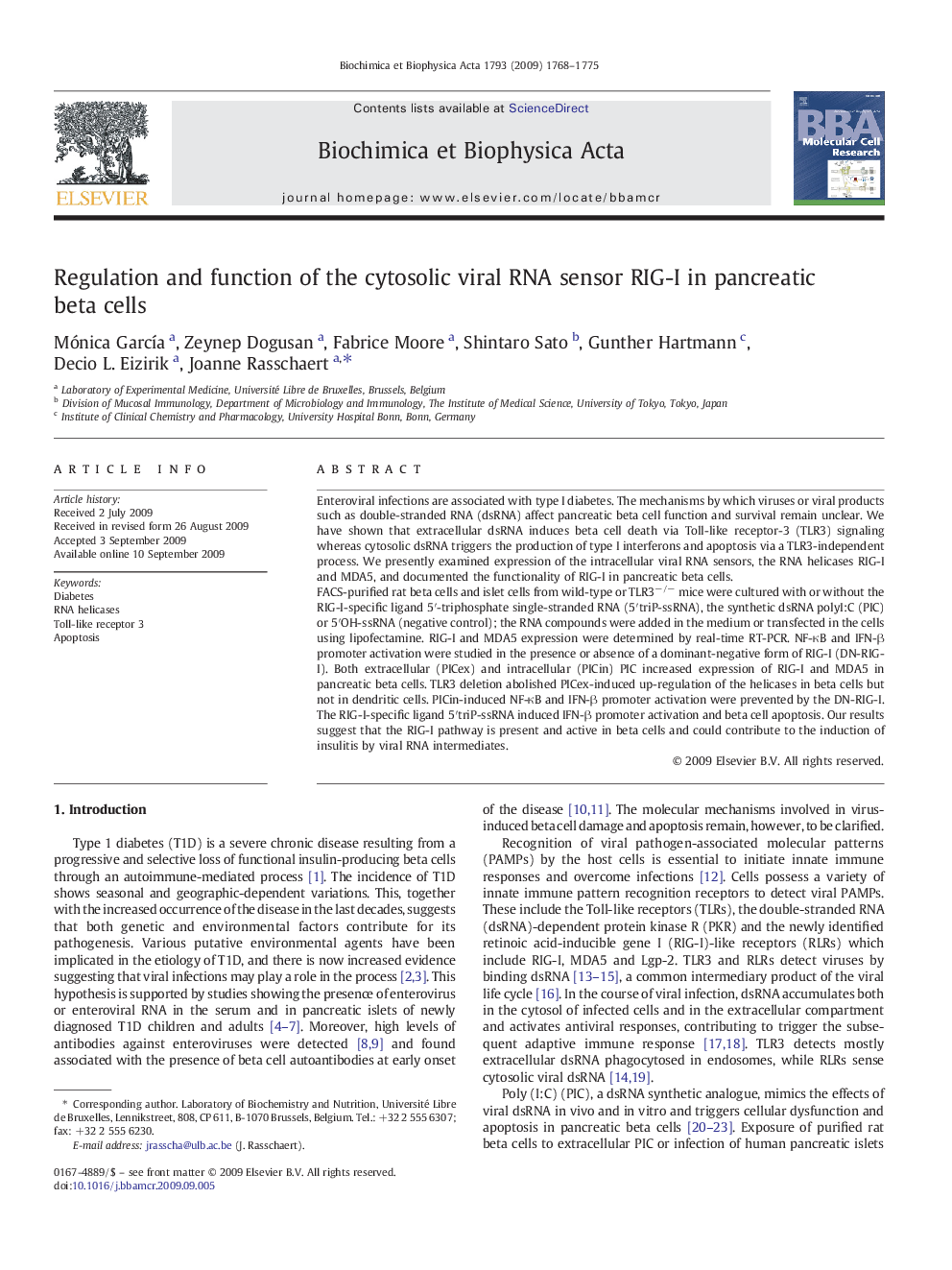| Article ID | Journal | Published Year | Pages | File Type |
|---|---|---|---|---|
| 1951104 | Biochimica et Biophysica Acta (BBA) - Molecular Cell Research | 2009 | 8 Pages |
Enteroviral infections are associated with type I diabetes. The mechanisms by which viruses or viral products such as double-stranded RNA (dsRNA) affect pancreatic beta cell function and survival remain unclear. We have shown that extracellular dsRNA induces beta cell death via Toll-like receptor-3 (TLR3) signaling whereas cytosolic dsRNA triggers the production of type I interferons and apoptosis via a TLR3-independent process. We presently examined expression of the intracellular viral RNA sensors, the RNA helicases RIG-I and MDA5, and documented the functionality of RIG-I in pancreatic beta cells.FACS-purified rat beta cells and islet cells from wild-type or TLR3−/− mice were cultured with or without the RIG-I-specific ligand 5′-triphosphate single-stranded RNA (5′triP-ssRNA), the synthetic dsRNA polyI:C (PIC) or 5′OH-ssRNA (negative control); the RNA compounds were added in the medium or transfected in the cells using lipofectamine. RIG-I and MDA5 expression were determined by real-time RT-PCR. NF-κB and IFN-β promoter activation were studied in the presence or absence of a dominant-negative form of RIG-I (DN-RIG-I). Both extracellular (PICex) and intracellular (PICin) PIC increased expression of RIG-I and MDA5 in pancreatic beta cells. TLR3 deletion abolished PICex-induced up-regulation of the helicases in beta cells but not in dendritic cells. PICin-induced NF-κB and IFN-β promoter activation were prevented by the DN-RIG-I. The RIG-I-specific ligand 5′triP-ssRNA induced IFN-β promoter activation and beta cell apoptosis. Our results suggest that the RIG-I pathway is present and active in beta cells and could contribute to the induction of insulitis by viral RNA intermediates.
